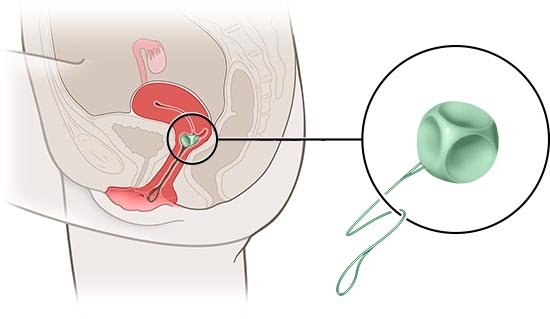Barber MD. Pelvic organ prolapse. BMJ 2016; 354: i3853.
Bugge C, Adams EJ, Gopinath D et al. Pessaries (mechanical devices) for managing pelvic organ prolapse in women. Cochrane Database Syst Rev 2020; (11): CD004010.
Deutsche Gesellschaft für Gynäkologie und Geburtshilfe (DGGG). Weiblicher Descensus genitalis, Diagnostik und Therapie (S2e-Leitlinie, in Überarbeitung). AWMF-Registernr.: 015-006. 2015.
Espiño-Albela A, Castaño-García C, Díaz-Mohedo E et al. Effects of Pelvic-Floor Muscle Training in Patients with Pelvic Organ Prolapse Approached with Surgery vs. Conservative Treatment: A Systematic Review. J Pers Med 2022; 12(5).
Haya N, Feiner B, Baessler K et al. Perioperative interventions in pelvic organ prolapse surgery. Cochrane Database Syst Rev 2018; (8): CD013105.
Li C, Gong Y, Wang B. The efficacy of pelvic floor muscle training for pelvic organ prolapse: a systematic review and meta-analysis. Int Urogynecol J 2016; 27(7): 981-992.
Sansone S, Sze C, Eidelberg A et al. Role of Pessaries in the Treatment of Pelvic Organ Prolapse: A Systematic Review and Meta-analysis. Obstet Gynecol 2022; 140(4): 613-622.
Taithongchai A, Johnson EE, Ismail SI et al. Oestrogen therapy for treating pelvic organ prolapse in postmenopausal women. Cochrane Database Syst Rev 2023; (7): CD014592.
Wharton L, Athey R, Jha S. Do vaginal pessaries used to treat pelvic organ prolapse impact on sexual function? A systematic review and meta-analysis. Int Urogynecol J 2022; 33(2): 221-233.
Wu YM, McInnes N, Leong Y. Pelvic Floor Muscle Training Versus Watchful Waiting and Pelvic Floor Disorders in Postpartum Women: A Systematic Review and Meta-analysis. Female Pelvic Med Reconstr Surg 2018; 24(2): 142-149.
IQWiG health information is written with the aim of helping people understand the advantages and disadvantages of the main treatment options and health care services.
Because IQWiG is a German institute, some of the information provided here is specific to the German health care system. The suitability of any of the described options in an individual case can be determined by talking to a doctor. informedhealth.org can provide support for talks with doctors and other medical professionals, but cannot replace them. We do not offer individual consultations.
Our information is based on the results of good-quality studies. It is written by a team of health care professionals, scientists and editors, and reviewed by external experts. You can find a detailed description of how our health information is produced and updated in our methods.




